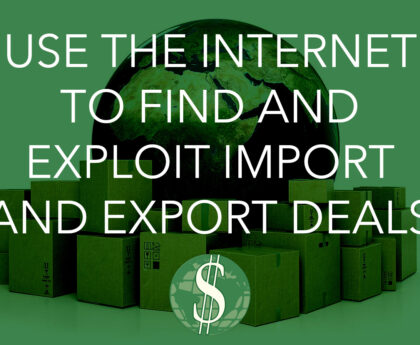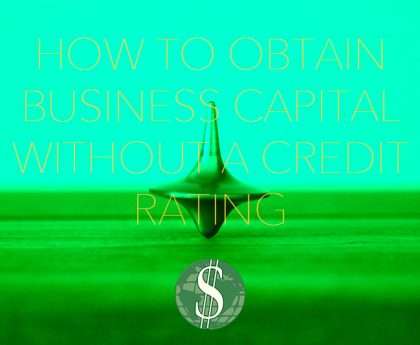Let’s not sugarcoat it: the new wave of Trump tariffs is real, and it’s shaking up global trade. We’re seeing 25% slapped on imports from Mexico and Canada, 20% across the board on Chinese goods, and a 10% tariff on Canadian energy products. Some people are panicking. Some businesses are slashing margins.
And yet—some entrepreneurs are getting rich.
You don’t beat tariffs by complaining. You beat tariffs by outsmarting them.
This article is your IW$ blueprint to dominate your niche. If you’re an importer, exporter, dealmaker, or M&A pro in the international space, read this closely. This is how real-world players are winning right now—and how you can, too.
First, Understand the Terrain, Then Own It
Tariffs are not the death knell of global commerce. They are pressure points and, like any pressure, they can produce diamonds.
Here’s what you’re dealing with:
- 25% U.S. import tariffs on goods from Mexico and Canada
- 10% U.S. tariff on Canadian energy
- 20% U.S. tariff on all Chinese imports
- Retaliatory tariffs from China, Canada, and Mexico are making U.S. exports more expensive abroad
If you import electronics from Shenzhen, tequila from Jalisco, or car parts from Ontario, then you’re feeling this.
But here’s the IW$ advantage: while competitors whine, we adapt faster. We find the angle. We use other people’s mistakes to build wealth.
The Real Opportunity is Margin Arbitrage
The tariff is a blunt tool. Smart entrepreneurs find the finesse.
Let’s say you’re importing cookware from China. A 20% tariff could destroy your margin, right? But a savvy IW$ reader does the math:
- Landed cost pre-tariff: $5 per unit
- Landed cost post-tariff: $6 per unit
- Retail price: $20 per unit
- Solution: Shift assembly to Vietnam, import to U.S. via bonded warehouse, modify SKU slightly, and still land it at $5.20 per unit
Result? You dodge the tariff, save margin, and your competitor eats a 20% penalty.
That’s margin arbitrage—and it’s how the elite win under any condition.
Strategy #1: Use Foreign Trade Zones Like a Pro
Foreign Trade Zones (FTZs) are one of America’s best-kept wealth secrets. Goods stored in FTZs avoid tariffs until they enter U.S. commerce. That gives you time, leverage, and options.
Examples:
- You can re-export goods tariff-free
- You can assemble or relabel them and reclassify under a different (lower-duty) HTS code
- You can test-market without triggering duty
BMW does it. GE does it. Smart IW$ entrepreneurs do it.
Action Step: Apply to use a FTZ near your port of entry. Use it as a strategic staging ground, not just a warehouse.
Strategy #2: Practice “Tariff Engineering”
Yes, it’s legal. Yes, it’s powerful.
Tariff engineering means modifying your product slightly to reduce the tariff rate. Example:
- One company imported shoes with fabric uppers and rubber soles
- Fabric uppers were tariffed at 37.5%
- By adding a tiny strip of rubber to the upper, the classification changed
- New tariff: 12.5%
Multiply that by 100,000 units, and you’ve saved hundreds of thousands of dollars.
IW$ Insight: Work with a skilled customs broker and HTS classification expert. You might be sitting on a goldmine of savings just by tweaking how your product is declared.
Strategy #3: Create Parallel Supply Chains
If your supplier is in a tariffed country, you don’t have to dump them—you just need a Plan B factory in a neutral territory.
China got hit with tariffs. What happened?
- Foxconn opened factories in Vietnam and India
- Clothing brands pivoted to Bangladesh and Egypt
- One U.S. entrepreneur I know moved tooling from China to Mexico in 90 days and is now tariff-free under USMCA
You can set up supply lines in Indonesia, Thailand, Poland, Morocco, or Colombia. Keep your Chinese suppliers for internal sales or Southeast Asia exports and route U.S.-bound goods through your parallel channel.
Strategy #4: Take Over What Your Competitor Abandons
Tariffs create chaos. Chaos creates opportunity.
Look at product categories where competitors are pulling back. Are they passing tariff costs onto consumers? Are they delaying shipments?
You can undercut them.
- One importer of LED lights found his Chinese competitor couldn’t afford the new 20% tariff
- He went to the same factory, negotiated a better FOB price, and set up a legal transfer through Taiwan
- Same quality. Lower cost. No tariff
- He took over his competitor’s Amazon listing in six months
IW$ entrepreneurs don’t cry. We capitalize.
Strategy #5: Use U.S. Export Incentives
The U.S. government wants you to export.
If you’re reselling tariffed goods in the U.S., the pain is real. But if you export them out of the country, you may qualify for a duty drawback—a refund of 99% of duties paid.
Let’s say you import $1M in circuit boards from China, then re-export $500K worth.
You could get $100K+ back in duties and shipping fees. That’s real cash flow.
Combine this with e-commerce exports to Europe or Latin America, and you’re playing 4D chess.
Strategy #6: Buy the Weak—and Win
Here’s an advanced IW$ maneuver: Acquire a competitor who can’t adapt.
Tariffs are exposing inefficient operators. Find someone:
- With a strong brand and fragile logistics
- With inventory they can’t move
- With a burned-out founder
You walk in, offer to buy at 1x revenue or less, and plug in your efficient supply chain.
Now you’ve acquired market share at a discount—and made tariffs work for you.
Strategy #7: Work the Trade Data
Every single tariff line and customs record is public.
Use tools like—
—to see exactly what your competitors are importing, where from, and how much.
Then undercut them.
If your competitor is bringing in plastic lawn furniture from Shenzhen, 10,000 units per month—you can track the factory, make a better deal, and offer a version with 20% more margin.
This is how smart money plays the game—IW$ style.
The World Is Still Open for Business
Don’t buy into the media narrative. Yes, tariffs are real. Yes, they complicate things.
But money never sleeps. Trade doesn’t stop. Demand doesn’t vanish—it shifts.
And if you’re nimble and informed . . .
You will grow.
You will thrive.
And you will win.
Next Steps for IW$ Entrepreneurs
- Review your top 5 SKUs. Where do they come from? What are the HTS codes? What’s the duty impact?
- Meet with your customs broker. Ask them how to reclassify or restructure to reduce duty rates
- Identify at least two alternative suppliers in tariff-free countries
- Learn how to use bonded warehouses or FTZs
- Watch your competitors’ trade flows. If they falter—move in
You don’t need to out-spend your competition. You just need to out-think them.
And that’s exactly what we do at International Wealth Success.
Want help executing these strategies? Check out our The IWS Export-Import Success Kit : K-17 and many other fine IW$ books and kits!





